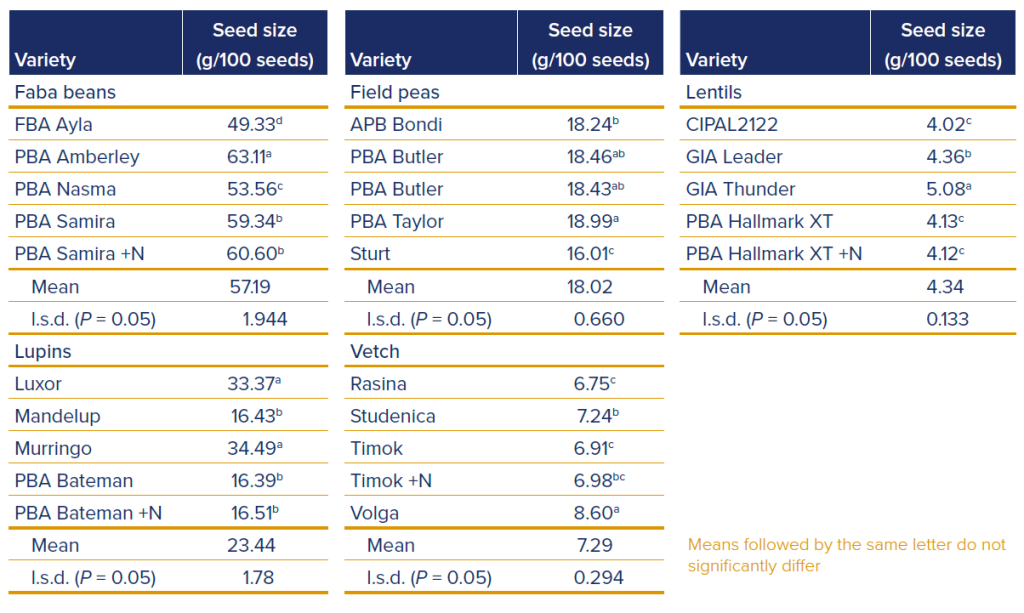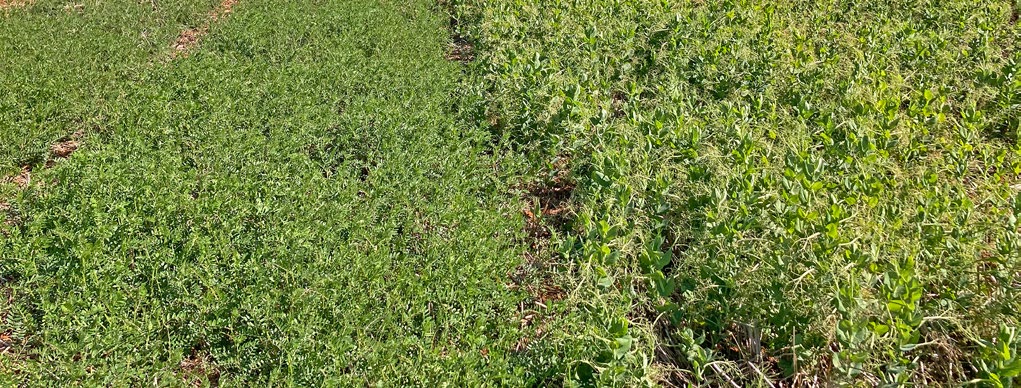Site attributes
Focus
Pulse species and variety comparison
- Evaluation of pulse species including lentils, lupins, field peas, vetch, and faba beans
- Determine which pulse species maintains nitrogen fixation at high base soil nitrogen levels.
Rainfall


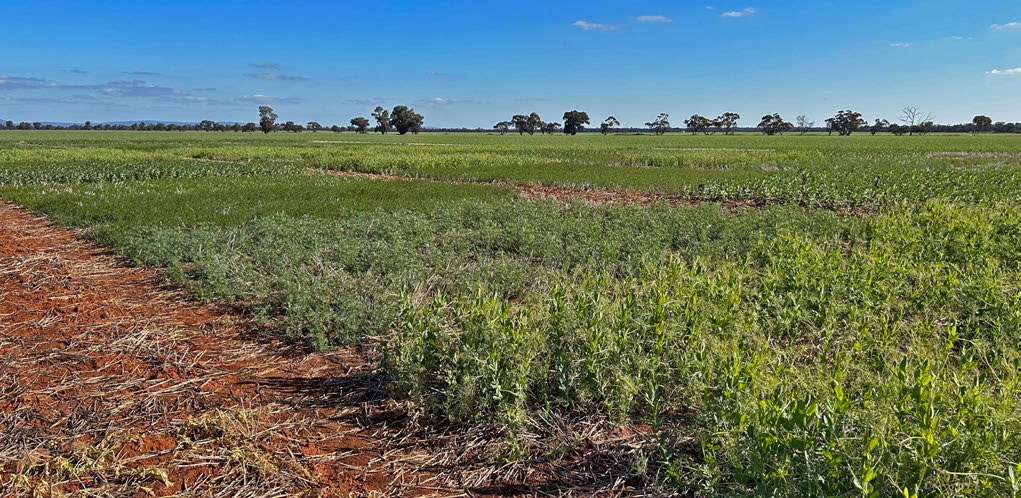
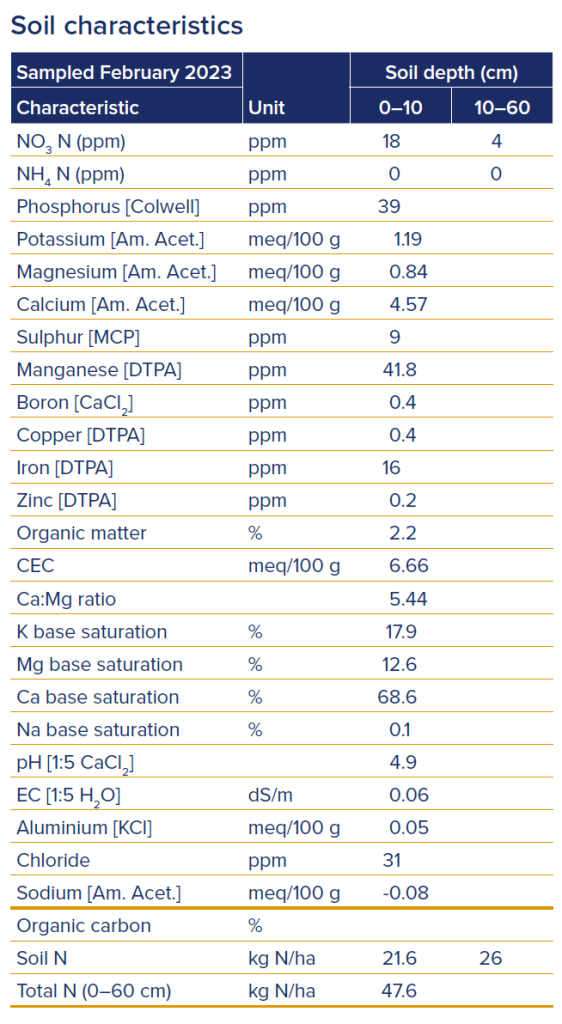
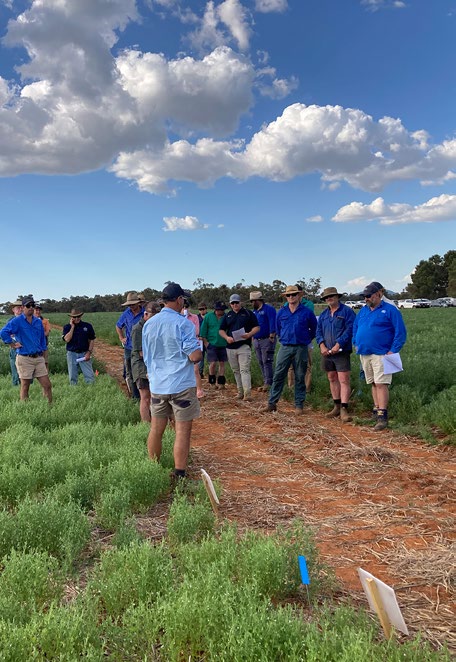
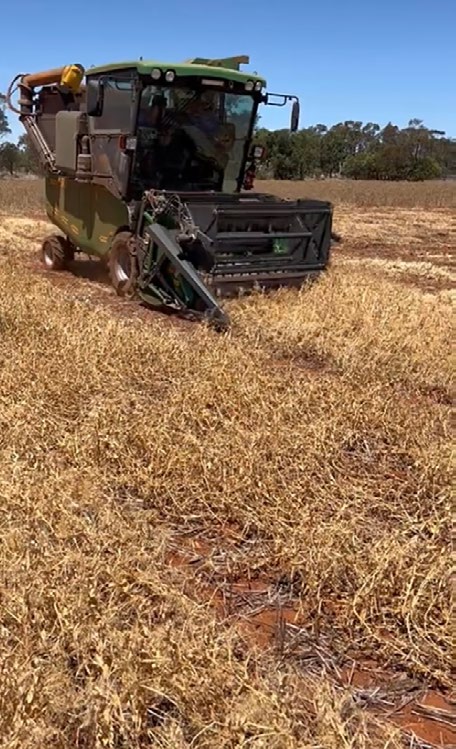
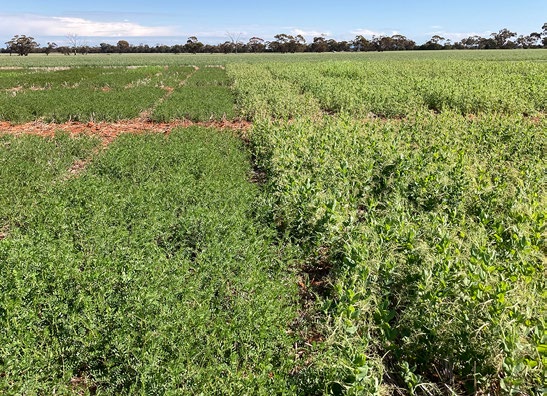
Pulse species and variety comparison
Key findings
- Faba bean grain yield averaged 1.53 t/ha and peak biomass 4.01 t/ha with no difference between varieties or PBA Samira +N treatment. FBA Ayla produced the smallest seed (49.33 g/100 seeds) of all varieties, while PBA AmberleyA produced the largest (63.11 g/100 seeds).
- Field pea highest yielding variety was APB Bondi (1.88 t/ha) and the lowest was Sturt (1.42 t/ha). The addition of N to PBA Butler made no difference to peak biomass but reduced grain yield by 0.17 t/ha. Of all varieties PBA Taylor produced the largest seed (18.89 g/100 seeds), while Sturt produced the smallest (16.01 g/100 seeds).
- Lentil variety GIA Thunder was the highest yielding (1.25 t/ha) and GIA Leader the lowest (0.83 t/ha). GIA Thunder also produced the largest seed (5.08 g/100 seeds). There was no difference in grain yield or peak biomass by the addition of N to PBA Hallmark XTA.
- Lupin yield of the albus variety Luxor (1.14 t/ha) was lower than all other varieties in the trial including the albus variety Murringo (1.63 t/ha). LuxorA also produced lower peak biomass (3.7 t/ha) than both PBA Bateman (5.92 t/ha) and PBA Bateman +N (7.53 t/ha). The average seed size of narrow leaf lupin varieties was 16.44 g/100 seeds, compared to 33.93 g/100 seeds for albus lupin varieties.
- Vetch variety Timok (1.38 t/ha) and Timok +N (1.52 t/ha) were the highest yielding treatments in the trial, while Volga (0.81 t/ha) and Studenica (0.95 t/ha) were the lowest. Volga produced larger seed (8.6 g/100 seeds) than all other varieties. The addition of N to Timok made no difference to peak biomass. A hay cut completed at early podding (21 September) resulted in average biomass (above ground) of ~5 t/ha for Studenica, Timok and Volga, with no effect from the addition of nitrogen on the biomass of Timok. Rasina had lower biomass than the three other varieties (3.9 t/ha).
Trial details
The pulse species and variety comparison trial in 2023 was set up to:
1. evaluate and compare the performance of major pulse crops (faba beans, field peas, lentils, lupins, vetch) in the northern Riverina region; and
2. measure the nitrogen balance (nitrogen fixed minus nitrogen removed) of the pulse species and how that is affected by elevated soil mineral N (using nitrogen fertiliser).
Seasonal conditions
The 2022 season was generally wet, so coming into the 2023 season there was a full profile of water. The trial was sown 9 May, with the topsoil starting to dry, as there was little rain during the second half of April and most of May. These drier conditions led to slow early crop growth.
Good rain followed in June and early July, which promoted crop growth, which then tapped into subsoil moisture reserves. Late winter and early spring were dry with extreme heat and some frost experienced in September. Rain in early October was timely, following the warm weather in late September, as conditions were starting to dry. The season finished with hot dry conditions.
Trial set up
Five separate pulse variety trials were sown at the site, therefore statistical comparisons between species
(faba beans, field peas, lentils, lupins and vetch) cannot be made. Each pulse species included four varieties and for one variety of each species 100 kg N/ha was applied pre-sowing as urea.
Measurements included peak biomass (related to nitrogen fixation and measured on selected varieties),
grain yield, and seed size. Peak biomass and seed from one variety from each species will be further
analysed to determine total N fixation and N removal.
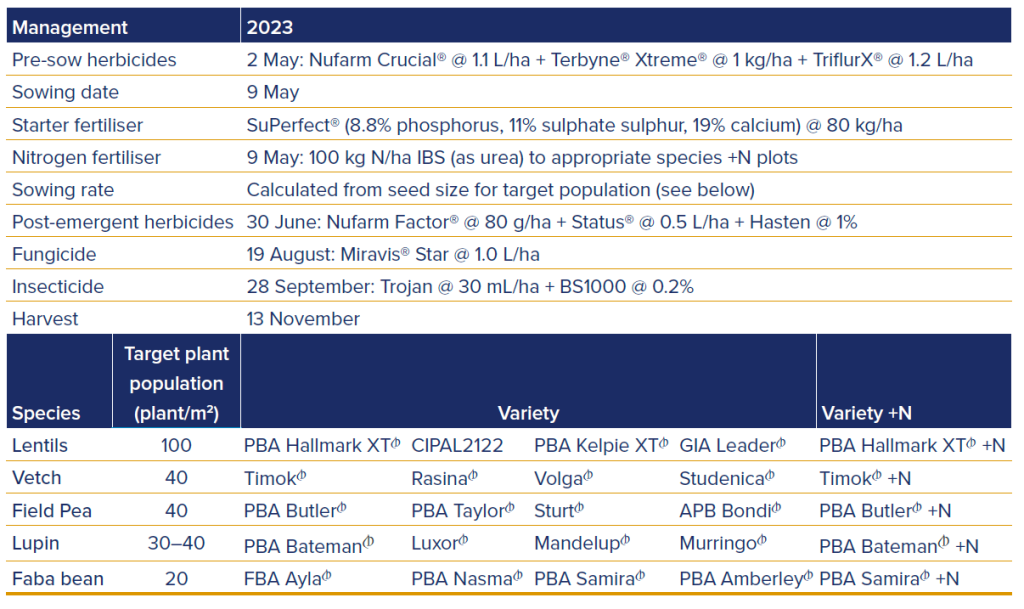
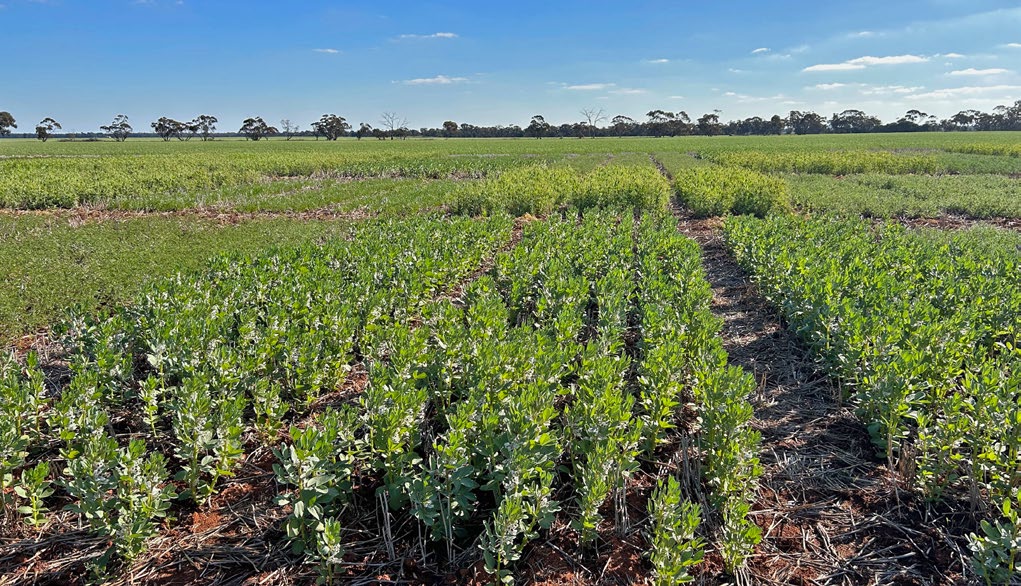
Results

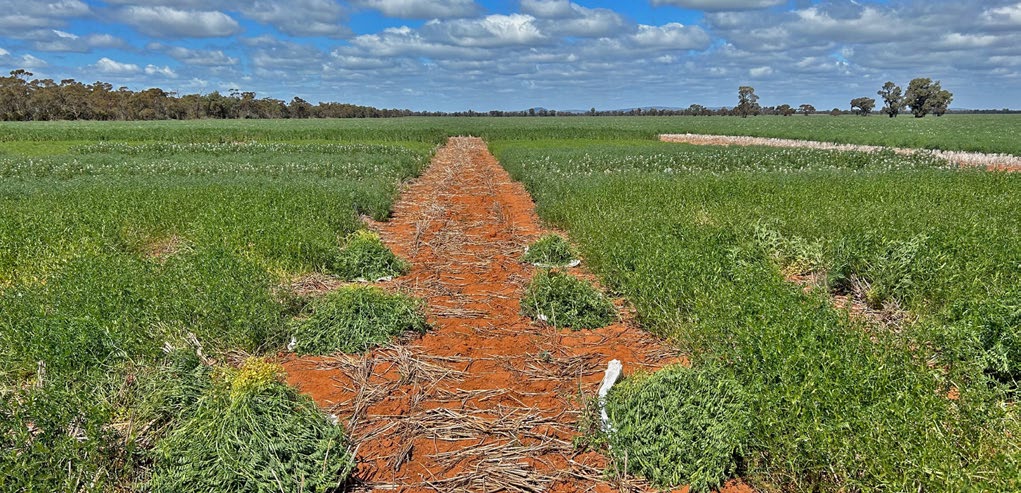
Peak biomass
Representative varieties from each species and the +N treatment were sampled for peak biomass
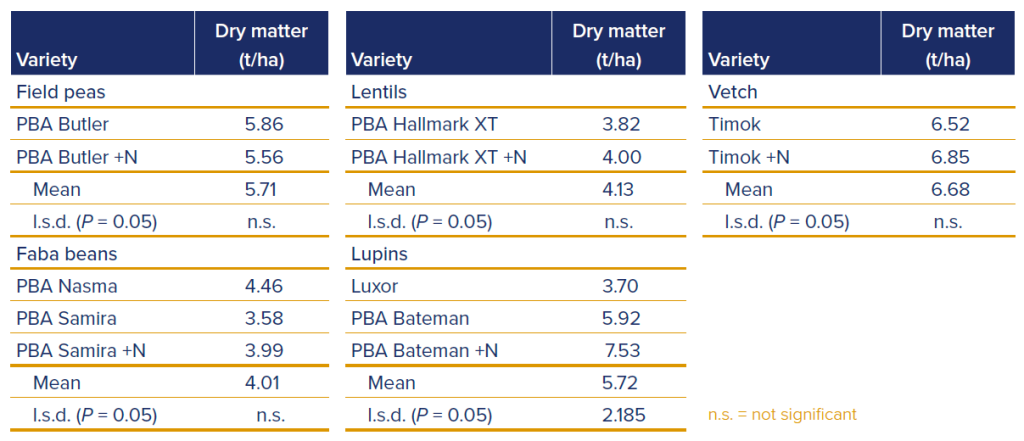
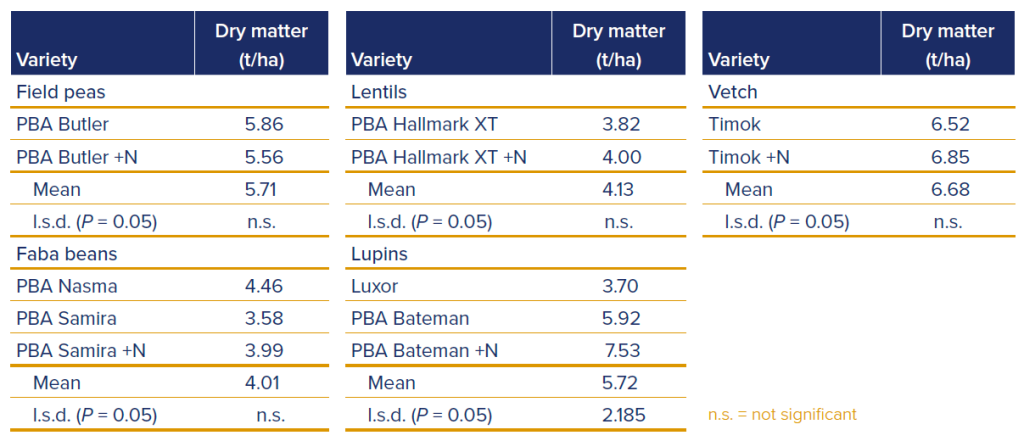
Grain yield
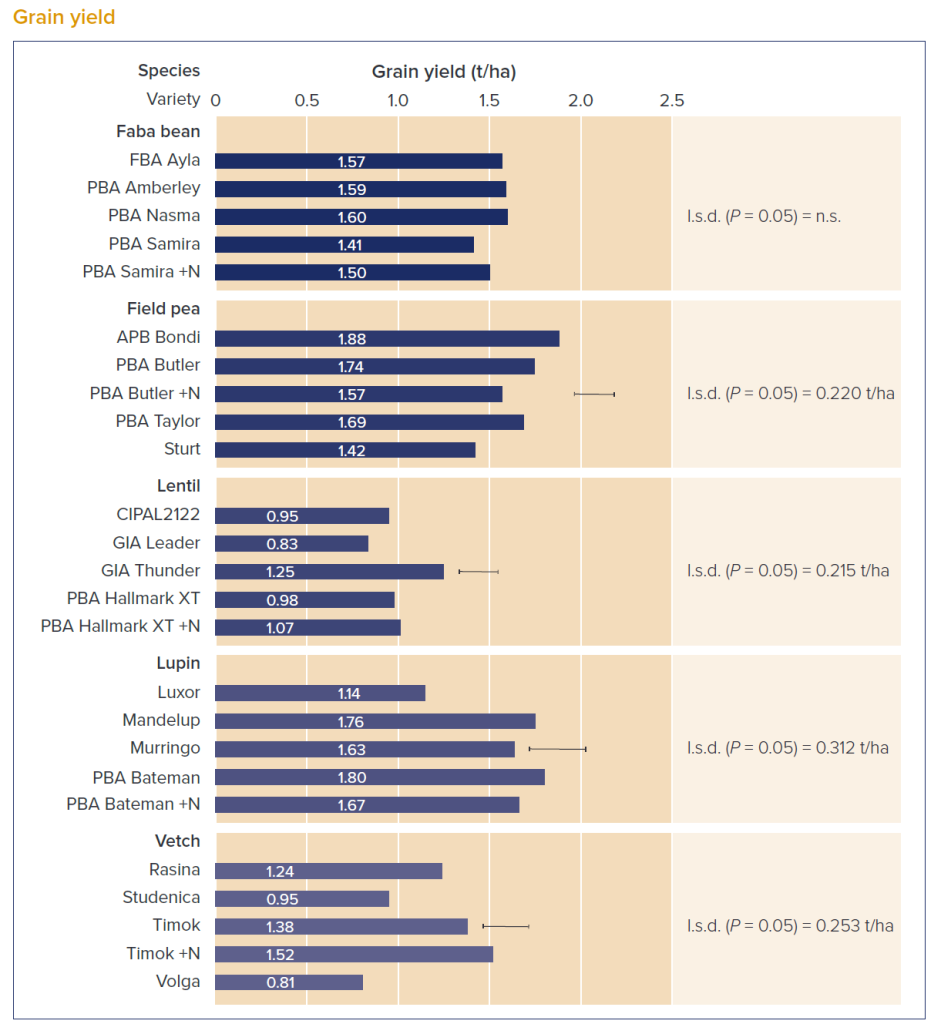

Seed size
